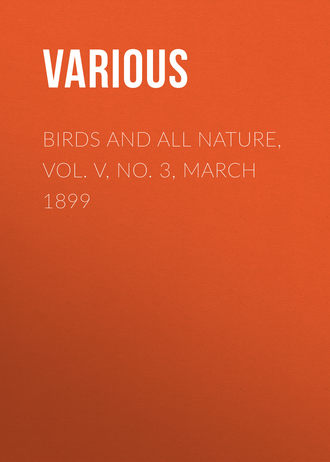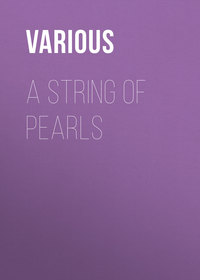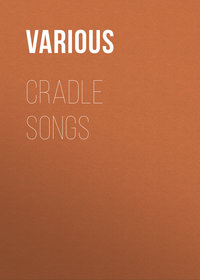
Birds and All Nature, Vol. V, No. 3, March 1899
This outer skin is formed of cells, flat on the surface, but near the true skin where they originate, rounded and in many cases even tall and apparently reaching out towards the surface. It gives the color to the person by means of pigment cells which lie in its midst.
The black man is dark because of the abundance of pigment cells in his scarf skin. The albino is light because of their absence. The colors of hair and feathers are due to these cells in their receptacles, but white and iridescent feathers are doubtless so partly because of their absence and partly because of hollow spaces which catch and reflect or refract the light.
This arrangement of cells into scarf skin has much to do with the healing of wounds. In cases of old sores that refuse to heal, or where the skin has been extensively destroyed, the doctors have found that good, healthy skin may be grafted upon the sores in such a manner as to invigorate and perfect the process of healing. Small particles of fresh skin taken from a healthy subject or from some other part of the patient's body are placed upon the sore, the portions used being about the size of a small pinhead, and new life seems transplanted in the deadened part. The skin of a black man grafted upon that of a white man shows afterwards no trace of its origin, but becomes the same shade as that which it adjoins.
Several animals change their tints to correspond with their surroundings. This subject has been exaggerated by observers of an imaginative turn of mind, but the fact remains that there is a decided change in the coloring of certain crabs and shrimps as well as in soles, chameleons, tree-frogs, and two kinds of horned toads wherever they are found against any well-defined shade or color. Some have maintained that man takes on a tint somewhat resembling the soil of the territory where he abides in an uncivilized condition, but Beddard considers Schweinfurth's statement that the Bongos have a reddish-brown skin similar to the soil of their country, and the Dinhas, their neighbors, are as black as their alluvial ground, merely as an account of what is purely accidental in the instances given.
The coloring of most fish so that they cannot readily be seen by looking down into the water because of the blackness of their backs, is highly protective. And the fact is more apparent when we note that an enemy looking at the same fish from below is hindered in discovery because the white under parts of the fish are hard to distinguish against the light of the sky above. Nearly all the protective color markings of animals are modifications of the scarf skin.
The true skin is of great interest both because it is the seat of what is called the sense of touch and because it is used so extensively in the arts in the form of leather.
Nerves of sensation expand over the whole surface of the body, and their minute branchings in the skin make contact with other substances highly discernible. But the sense of touch is peculiarly developed in few of the lower animals, and we may almost regard it as an attribute of man alone. Our ability to turn our fingers about things and move our hands over their surface gives us a power that is rare in nature. We can tell whether things are hot or cold, rough or smooth, sharp or blunt, wet or dry, and gather many other items of interest which the other senses are incapable of compassing.
A monkey can wind his tail about a nut and tell by the sense of touch whether it is worth his while to crack it. The elephant moves the tips of his trunk carefully over the surface of what he wishes to examine and gets knowledge he can depend upon. But it is the hand of man that shows the highest order of development of touch. By it blind men know their friends and read their books, bank clerks detect the qualities of the notes they handle, and a thousand deft acts in the arts are accomplished.
The true skin is covered with minute projections called papillæ. They may be traced in the palm by the ridges of the scarf skin. They are arranged there in rows so that while the naked eye does not discern the projections individually the rows of them may be noticed on the surface of the scarf skin. Some of these papillæ contain blood vessels and others corpuscles of touch. Some papillæ are small and simple, others compound. In one square inch of the palm have been counted 8,100 compound and 20,000 smaller papillæ arranged in regular rows. There seem to be different end organs for different sensations. There are different spots which may be touched with a fine pointed pencil of copper which is quite hot and no feeling will result. Perhaps the same identical spots touched by the same point, after having been immersed in ice water, will give sensations of cold. Hot spots and cold spots may be found and marked upon the skin. There are more hot spots than cold ones. Either of these when disturbed electrically will give sensations of heat or cold when neither heat nor cold is applied.
Ashe mentions an experiment which shows that the body is not equipped exactly alike on both sides, for when both hands are placed in hot water the heat seems greater to the left than to the right hand. Aristotle wrote of the peculiar feeling produced by placing the ends of the first and second fingers upon a small substance like a pea. With the fingers in their natural position you feel one small round body. Place the same fingers upon the same pea, but with one finger crossed over the other so as to touch the pea on the other side, and you distinctly feel two peas. Another of the freaks of touch may easily be tried by placing the palms together so that fingers and thumbs are against their fellows. Close the hands partly and open them again repeatedly and in a short time instead of each finger's feeling another finger there will seem to be an oiled pane of glass between the hands keeping the fingers about a quarter of an inch apart. The delusion subsides when you look at your hands.
Leather was very early known in Egypt and Greece, and the thongs of manufactured hides were used by all nations for ropes, harness, and other instruments. The renowned Gordian knot, 330 B. C., was of leather thongs. A leather cannon was made in Edinburgh at the time of the American revolution. Although it was fired three times and found to answer, and other firearms were made of this material, it never became common. Had it not been for Mother Goose the leather gun might have dropped from the memory of man.
Leather is made from the true skin and tannic acid. The processes of tanning have recently undergone such changes and improvements that it is out of the question to follow them briefly. The union of the white fibres of gelatin, gluten, and kindred substances with the tannic acid, forms insoluble compounds which have great resistance and strength. This acid is found in oak and hemlock bark, and also in that of many other trees such as willow, ash, larch, sumac, and terra japonica. Tea is one-fourth tannic acid.
Deer skin makes the finer kinds of morocco, while sheep and goat skin make the grades that are used in book-binding. Seal skin makes a superior kind of enamelled leather for boots, bags, dressing-cases, and ornamental articles. Hog skin is so full of oil that it resists the tannic acid, yet saddles are made from it, and it has other uses. The French glove makers produce a very good kid glove from rat skin which can be distinguished from the real article only with a microscope.
The tanner applies the term, skin, to the smaller product taken from calves, dogs, rats, cats, and small game, reserving the dignified name of hide for that of the full-grown ox or horse, while the skin from a two-year-old steer is called a kip.
The highest use of skins is in the form of parchment and vellum on which are printed and engrossed the most valuable documents prepared by man.
THE AZALEA
Fill soft and deep, O winter snow!The sweet azalea's oaken dells,And hide the bank where roses blow,And swing the azure bells!– Whittier.THE azalea is a genus of plants belonging to the natural order Ericeæ and to the sub-order Rhodoreæ named in allusion to the dry places in which many of the species grow, and consists of upright shrubs with large, handsome, fragrant flowers, often cultivated in gardens. The genus comprises more than a hundred species, most of them natives of China or North America, having profuse clusters of white, orange, purple, or variegated flowers, some of which have long been the pride of the gardens of Europe. The general characteristics of the genus are a five-parted calyx, a five-lobed funnel-form, slightly irregular corolla, five stamens, a five-celled pod, alternate, oblong, entire, and ciliated leaves, furnished with a glandular point. Most of the species differ from the rhododendrons in having thin, deciduous leaves. Some botanists unite the genus azalea to rhododendron. North America abounds in azaleas as well as in rhododendrons, and some of the species have long been cultivated, particularly A. nudiflora and A. viscosa, which have become the parents of many hybrids. Both species abound from Canada to the southern parts of the United States. A. calendulcea, a native of the South, is described as frequently clothing the mountains with a robe of living scarlet. All the American species are deciduous. In cultivation the azaleas love the shade and a soil of sandy peat or loam. Works on horticulture give specific and elaborate direction for the cultivation of the various species.
C. C. M.COMMENDABLE BOOKS
W. E. WATTChapters on the Natural History of the United States. By Dr. R. W. Shufeldt. Studer Brothers, Publishers, 114 Fifth avenue, New York.
The man who is able to go out into the fields and see things is a good man to know. Whether he has the gift of telling well what he sees or not, we are glad to be with him, for he is full of the things we desire much to know, and we can get them out of him. If he is a rare story-teller, with marked powers of description, so much the better. But if he combines these elements with the practice of an expert photographer and uses all his arts to get the secrets of nature down exactly as they appear, he is a prince of good fellows to all who worship at the shrine of nature.
Dr. Shufeldt has done all this, and his enterprising publishers have brought out the matter in a large octavo volume of about four hundred pages, solidly bound, with gilt tops. The price is only $3.50, net, and any lover of nature having the half tones he gives would not part with them for ten times the cost of the book.
Catching good negatives of live birds in the open is not easy. One needs to know photography and bird habits extremely well, and then be satisfied with a thousand failures along with a few successes. This knowledge and patience have been remarkably displayed by the author in the profusion of full-page reproductions of his valuable work.
The meadow lark's nest containing young birds is a most artistic plate. The tree toads clinging to their tree and the mother spider caught in the act of carrying her young in a silken ball are deserving of special commendation. His pair of cedar birds look particularly happy as they balance upon their twigs and eye the camera as if they knew all about it.
Horned toads and whales, dragon flies and opossums, as well as many other forms of life, both common and rare, have their turn at entertaining the reader, and their inmost thoughts seem to have been read by this enthusiastic and peculiarly successful scientist.
It is a good book for children of all ages, but wherever it is introduced into any family the younger children will uniformly have to wait till their elders have enjoyed it, for no age can be proof against its charms.
Birds of North America. Illustrated Descriptive Manual to Beard's Natural History Charts. Potter & Putnam Company, 63 Fifth Ave., New York.
This convenient little pamphlet contains brief descriptions of some of the most common birds, the eagle, the owl, the parrot, the crow, the turkey, the quail, the ostrich, the heron, the swan, and the penguin. It is closely printed with numerous illustrations of the structure and forms of the typical birds of each sort, and gives in language that can well be understood by children, the principal facts of interest.
It is sold at 20 cents, and will be found valuable to a large class of teachers who are in search of material to interest their pupils in the common birds of our country.
Nests and Eggs of North American Birds, by Oliver Davie, author of "Methods in the Art of Taxidermy," etc. The Landon Press, Columbus, Ohio.
This is the fifth edition of an excellent work that has already won wide recognition as an exposition of how the birds build and lay. It has been revised and enlarged considerably, and now contains a profusion of cuts that will be highly appreciated. Recognizing the difficulty the mind has in grasping the entire meaning of a written description, the author has added to his text a large number of well-executed drawings of the birds most difficult to describe and has given their nests and eggs the attention their importance to the naturalist demands.
The book consists of over five hundred pages octavo, closely printed, and arranged so as to constitute a convenient and exhaustive encyclopedia of the birds of this country and their nests and eggs. Although the title of the book would lead one to think the matter does not pertain to the habits of the birds, nor their appearance, it is more complete in this respect than many books written ostensibly to describe the birds themselves, and in many of its articles almost complete life histories are to be found. The nesting habits and the hatching of the eggs have led the author on till the work has become a very readable one for those who are by no means specialists on eggs and nests. The writer has modestly disclaimed attempting to cover so much ground and refers his readers to the works of Coues and Ridgway for further particulars.
The numbers of those who do not let a summer pass without looking into the lives of the birds which visit their country residences are rapidly growing, and this growth of interest on the part of thousands who do not wish to become experts but desire to enjoy their feathered neighbors and their products most fully, has made room for a large sale of this work. It has but to become known to be possessed by all cultured households where trips to the country are annually made.
To know the birds of one's locality by name and to be able to identify their nests and watch their doings with some degree of intelligence is an accomplishment which many desire and are annually attaining. With this work in one's possession few birds can remain in the vicinity without being identified. The gladness and loss of selfish thoughts and motives that are the reward of all those who lose their hearts to the birds and their growing families do far more good in the world than any amount of drugs and dieting.
Few people go to the country without having something they wish to gain in the way of health. A prescription of bird life taken regularly before meals has been found one of the greatest cure-alls the world has produced. There is no work in existence better calculated to promote this sort of convalescence than this one on the nests and eggs that we so often run past in our ignorance of the joy a bush or stump or tree has in store for those who have a mind to find it.









